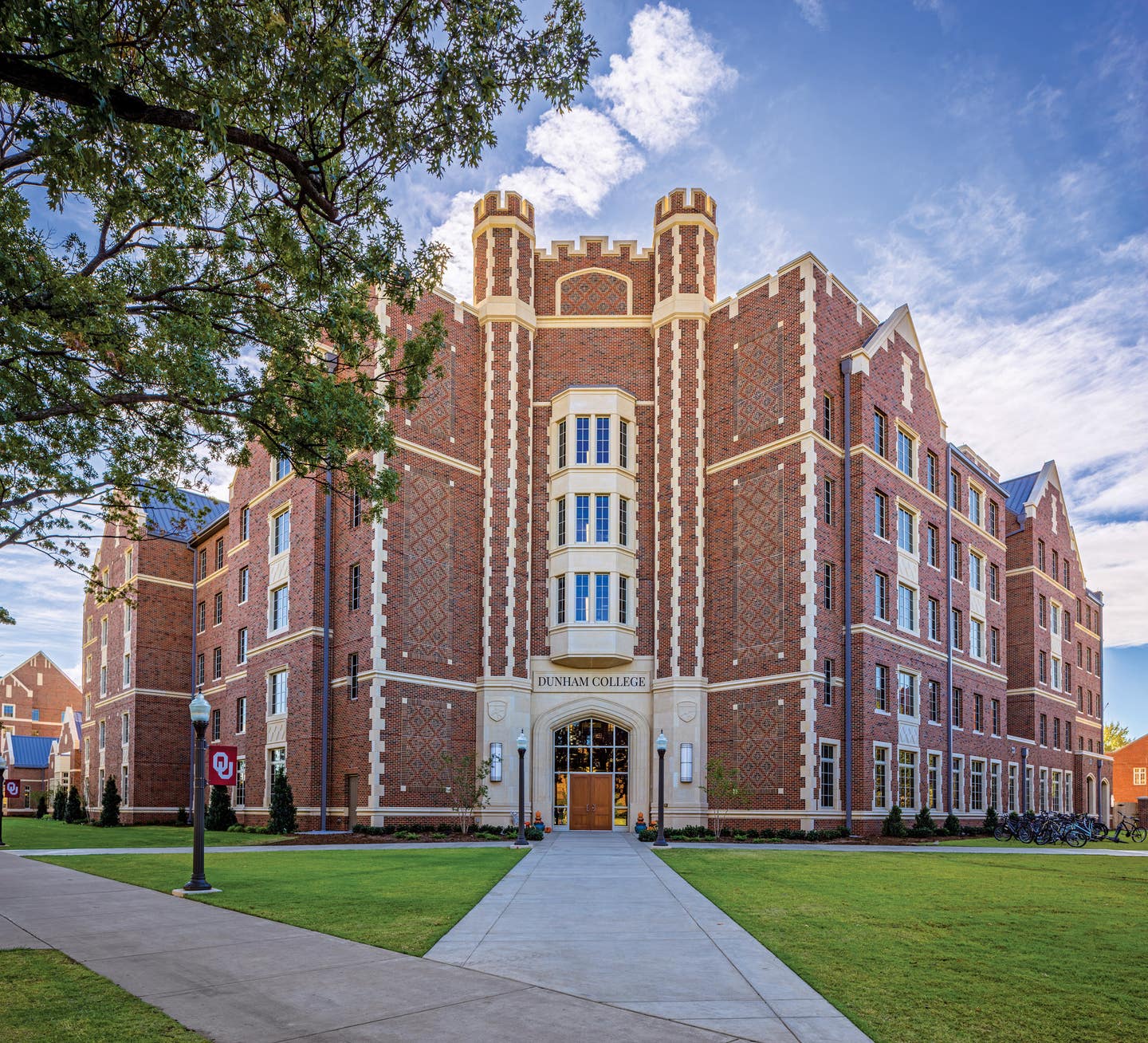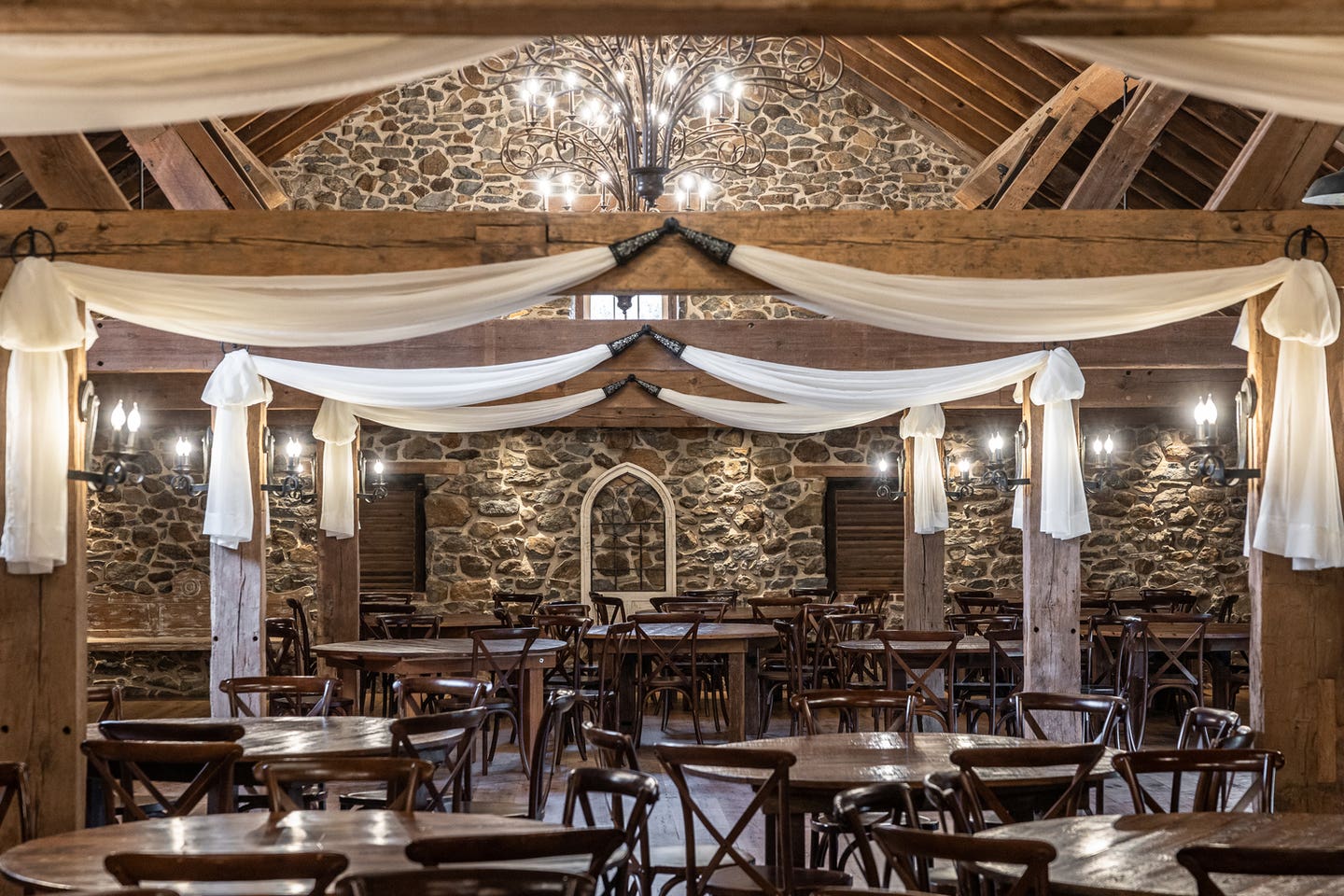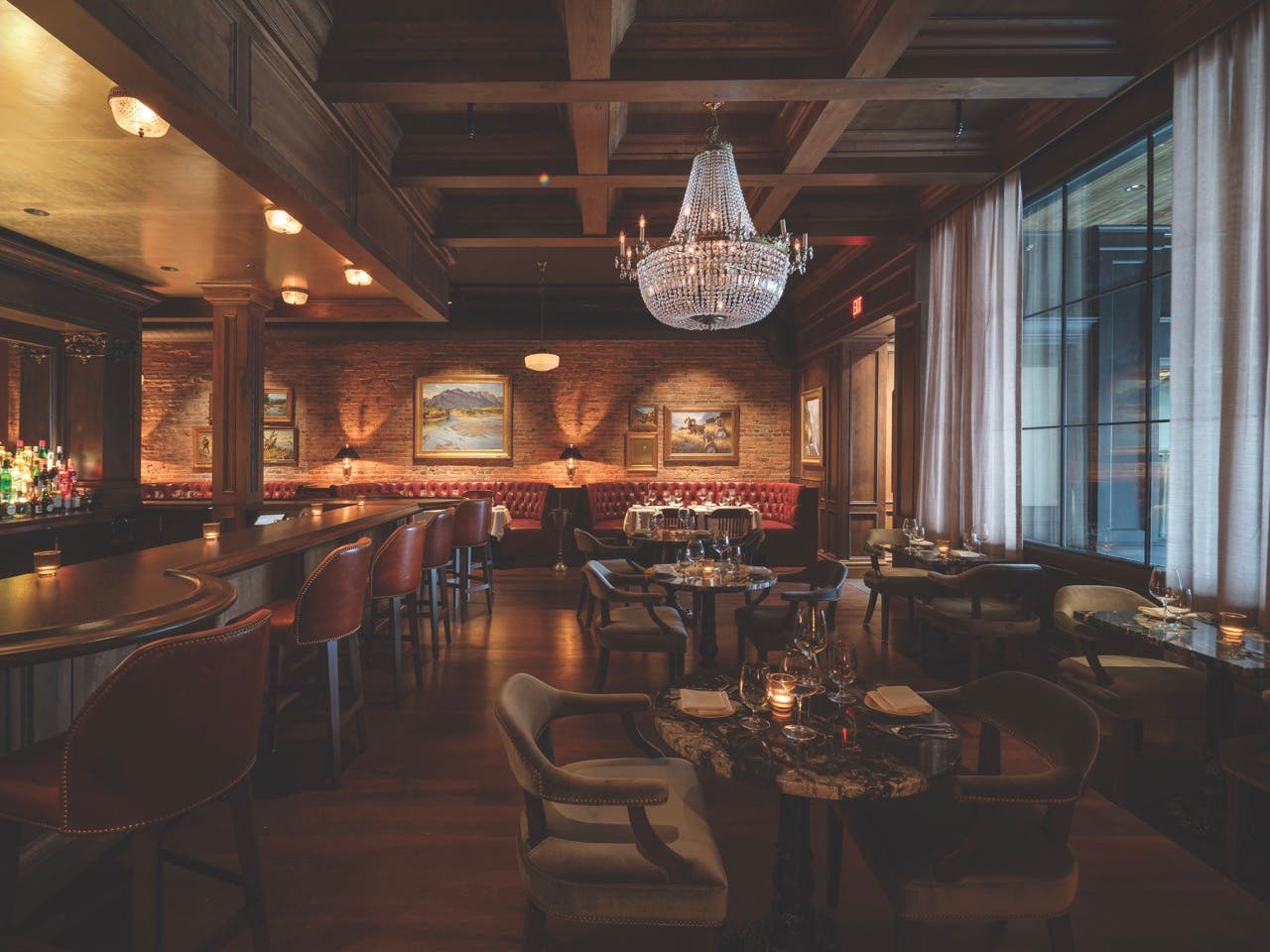
Projects
New Residential Colleges at University of Oklahoma by KWK Architects
Project: New Residential Colleges at University of Oklahoma
Design Architect: KWK Architects, St. Louis, MO; Paul Wuennenberg, AIA, LEED AP, Principal
Architect of Record: ADG, P.C., Oklahoma City, OK; Javier Esteban, Steve Matthews, AIA
The University of Oklahoma at Norman, which put down its roots in prairie land in 1890, is known for its research creds, its football team and its distinctive traditional-style architecture. Early in the 20th century when institutions of higher learning in the United States and Canada were unabashedly embracing the Collegiate Gothic style, the university, now colloquially called OU, opted to go its own way when it rebuilt its campus after a 1903 fire destroyed its only building.
So it seemed only fitting that the resulting maverick signature style—dubbed Cherokee Gothic by Frank Lloyd Wright when he toured the campus—be replicated in its two new ground-breaking residential colleges.
“The red brick and white limestone trim of Cherokee Gothic style create a very animated façade,” says Paul Wuennenberg, principal of KWK Architects, the higher-education student housing and dining specialist firm in St. Louis, MO, that designed the buildings. “Because of the color contrasts, Cherokee Gothic looks more light and lacy than Collegiate Gothic, which can be somber. Wright apparently chose the name because it reminded him of the rhythm of the patterns in blankets made by Native Americans who were living in the state.”
The design of KWK Architects’ residential colleges was influenced by the iconic Cherokee Gothic buildings on the North and South Ovals, the historic centerpiece of the campus, which were designed by an English Professor named Vernon Louis Parrington, whose overarching vision was never implemented.
The co-educational Dunham and Headington Colleges, part of a larger master plan for campus housing formulated by KWK and architect of record ADG, P.C., of Oklahoma City, OK, feature Ivy League-style living/learning spaces that give students a sense of community and identity within the larger university environment. It is, to say the least, an audaciously unusual idea for a public university that has some 30,000 students and 3,000 faculty members.
“In many ways, the residential colleges, which include elements such as libraries, dining halls and gyms, become a microcosm of the campus,” says Wuennenberg, AIA, LEED AP.
Among the first residential colleges in the state, Dunham and Headington were the brainchild of then-University President David L. Boren, a graduate of Yale and Oxford Universities who wanted to create a similar old-school experience for Oklahoma students. “They will have a huge impact on student life,” he said. “For the first time, we will be able to provide on-campus housing for upperclassmen and upperclasswomen.”
The five-story red-brick and limestone buildings, which each house 300 students, are designed to complement each other. While the limestone entrances for each college are very similar, they are not identical (one is on a corner and the other is in the façade’s center), and the central towers and the insets of tapestry-like herringbone brick patterns are variations on a theme. Dunham also has a historic, softer arch than Headington, which features a pointed, modern arch at the entrance tower element.
“Dunham and Headington hang together visually,” Wuennenberg says, “but they differ in their subtle details. Headington, for instance, has less quoining, and the tracery at the top of the towers are different on each. But both have many references to other campus buildings in the Cherokee Gothic style.”
Arranged in a horseshoe shape, they are connected in the front by a pair of lower-level dining halls, separate units that share a chimney. A pair of private courtyards, accessed by student key cards, create a greater sense of community for the residents of each building. Inside, the major architectural elements, notably the limestone fireplaces in the main lounge and the oak paneling of the main floor, continue the twin theme.
Each building contains a main lounge, study rooms, a library, instruction rooms and bedrooms. There also are an apartment for the senior faculty fellow and his or her family and private dining rooms for the instructors. The co-ed residential colleges are for sophomores, juniors and seniors; freshmen are required to live together in a separate, conventional-style dorm.
“They are based on the residential college models of the Ivy League,” Wuennenberg says, adding that university stakeholders and members of the design team, Javier Esteban of KWK and Steve Matthews, AIA, of ADG, visited several of Yale’s colleges for inspiration. “Each building has its own dining room, with trussed-beamed ceilings. There is a central kitchen, but students at each college get their meals at stations and sit at communal tables. Each year, they come back to the same college.”
Sited on a former parking lot, Dunham and Headington are across from the football stadium and adjacent to the players’ living quarters. “It was a high-ticket tailgating spot,” says Wuennenberg. “It’s a prime location, right in the heart of the campus and adjacent to residential housing.”
The layout of the public rooms came with a special mandate: for security reasons, they don’t face the playing field. “Nobody is allowed to watch the team practice,” he says, “because they don’t want any spying by opponents.”
Bricks and limestone aside, the buildings were designed to create a community of students who work and live together. The bond is enhanced by programming that brings the students together in after-class social learning settings such as museums. “It’s all about cross-pollination of interests,” Wuennenberg says. And it keeps students on campus. “At OU, about half of the sophomores join fraternities or sororities,” he says. “By their junior year, many are living off campus.”
KWK Architects, which was founded in 2013 by Wuennenberg and four other architects, has completed more than $1 billion in construction-valued projects, including ones for Washington University in St. Louis, the University of Minnesota and the University of Colorado.
Wuennenberg says the $82-million University of Oklahoma commission was unique. “I really do like Collegiate Gothic architecture, and I’ve done lots of work in that style,” he says. “A project of this size at a well-respected institution offered a wonderful nexus of opportunities to work within the Collegiate Gothic vocabulary, which I adore and which early in my career I co-authored a book about.”
The colleges opened for the fall 2017 semester to the praise of students and faculty. “Building the buildings was only the beginning,” said Wuennenberg. “The challenge for any residential college is continuing the commitment to ongoing programs by the senior faculty fellows.”
It was an honor, he says, to help Boren, who retired shortly after Dunham and Headington Colleges opened, realize his dream. “This is his legacy,” he says. At the ribbon-cutting ceremony, the pleased president declared that Dunham and Headington Colleges are “two of the finest buildings on campus.”
Key Suppliers
Contractor: JE Dunn, Oklahoma City, OK
Financial/Master Planning: Brailsford & Dunlavey, Chicago, IL
Structural Engineer: Wallace Engineering, Oklahoma City, OK
Civil Engineer and Interiors: ADG, P.C., Oklahoma City, OK
Furniture: MA+ Architects, Oklahoma City, OK
MEP Engineer: Alvine Engineering, Oklahoma City, OK








